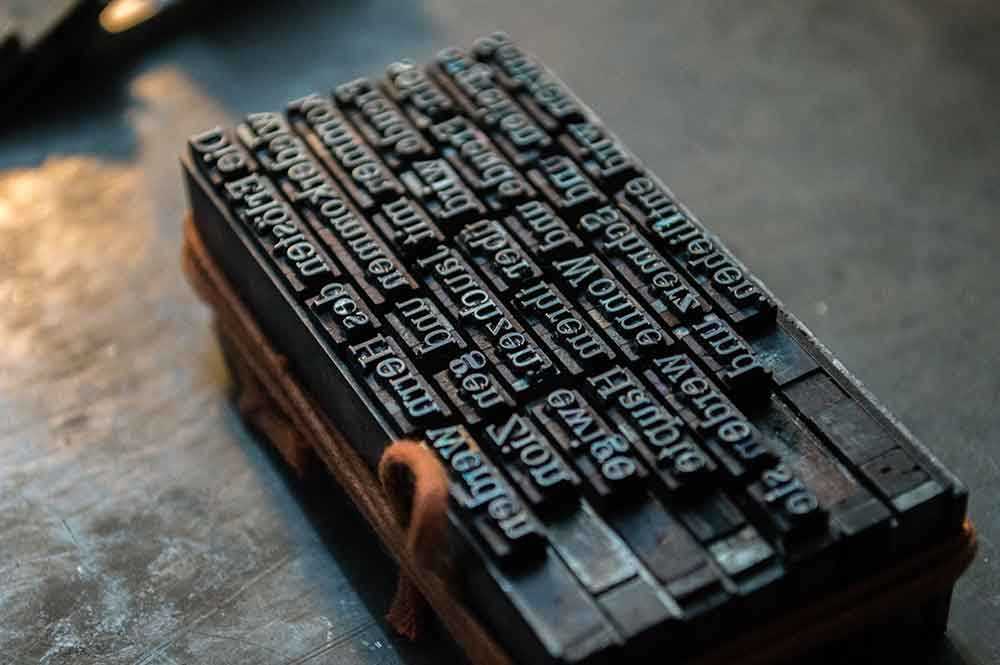Have you ever been amazed by a work of art or piece of literature that seemed to come from nowhere? What if I told you that it could be the result of a revolutionary new technology? Generative AI is revolutionising programming, design, art, and writing, unlocking creativity in ways never before seen. Contrary to the popular belief that this is bad and will put us all out of a job, I believe generative AI is unleashing creativity and transforming the way we approach design, programming, art, and writing.
Generative AI is an artificial intelligence technology that uses algorithms to create entirely new content. It has been used for years to generate computer code in software development, but now its potential as an innovative tool for artists and writers is starting to be explored. With generative AI, creators are able to produce unique works of art or literature without having to write every single line themselves. Instead, they can rely on the program's algorithms to do much of the work for them.
Ai Is Not The Enemy, It's a Tool
As technology has advanced, AI has become an increasingly important factor in everyday life. We often view AI as a threat to our jobs, but the truth is that AI can provide us with a number of exciting opportunities. When the internet came along, people were saying postmen would be out of a job because of email, did it happen? Well not really. The last 10-15 years has seen a steady increase in staff at for instance the Royal Mail in the UK. The pandemic caused a problem but not really email. Email just became a part of our lives and allowed us to be more efficient, as did the Internet generally.
Generative AI has enabled us to think more creatively about how we approach problems and solutions. It helps us to think beyond traditional methods and explore new possibilities for creating powerful and engaging content that not only catches the eye but also makes sense when read. With generative AI, coders can write smarter code faster than ever before; designers can create beautiful visuals with minimal effort; artists can explore new mediums and techniques; and writers can craft stories that are both compelling and meaningful.
The History of our Content
We have been creating art and telling stories for tens of thousands of years, dating back to prehistoric times when our ancestors drew on cave walls and carved figurines out of stone. These early forms of art and storytelling served a variety of purposes, from documenting hunting practices to celebrating spiritual beliefs.
As our civilisations developed, so too did their art and storytelling practices. From the murals and frescoes of ancient Egypt and Greece to the illuminated manuscripts of the Middle Ages, creators used the tools available to them to bring their ideas to life.
The invention of the printing press in the 15th century marked a major turning point in the history of content creation. Suddenly, it was possible to produce large quantities of books and other printed materials quickly and affordably, which led to an explosion of content and new professions like journalism and writing.

The possibilities offered by generative AI are truly exciting and people need to wake up to this. By allowing creators to tap into their own creative potential in ways never before possible, this technology has the power to revolutionise our approaches to programming, design, art, and writing.

The rise of the internet in the late 20th century and early 21st century has had a similarly transformative effect on content creation. With the advent of digital tools and platforms, creators can now produce and distribute their work to a global audience with ease. Social media, blogs, and other online platforms have given rise to new forms of content like podcasts, videos, and interactive media.
The key difference between content creation today and in the past is the availability of tools and technologies that make it easier than ever to bring ideas to life. Whereas journalists, writers, designers and artists have had to actually do the content creation themselves we now have tools to bring any idea to life in a matter of minutes. Instead of looking at this as a threat, creators need to start thinking of this as the biggest opportunity since the Internet started gaining popularity in the mid 90s. I believe all the major creative professions (and I include programmers and data scientists in this) should be excited rather than fearful.
How Generative AI Helps Designers
The creative aspect of design is something that AI can assist with in a major way. AI can be used to generate ideas and concepts, allowing designers to explore new possibilities and come up with innovative solutions that they may not have thought of before. With AI-driven tools like Midjourney, designers can quickly create visuals without spending hours on manual work like adjusting colours or shapes. This allows them to focus more on the creative process, exploring different options until they arrive at an optimal solution.
Does this make them any less of a designer? I'd argue it makes them a better designer. They can still use the tools they need to use to get the work out (IE Adobe illustrator for print work) but they can start with a design idea generated by AI. It's a way to produce 100 ideas quickly based on what the designer is thinking.
AI is also able to provide valuable insights into how users interact with designs. By gathering data from users and analysing it with artificial intelligence algorithms, designers can gain an understanding of what works best for their target audience. This helps them create designs that are more effective in terms of engagement and user experience. In short, AI has made it easier for designers to unlock their creativity and take their designs to the next level.
How AI Helps Artists
When it comes to art, AI can provide artists with a whole new set of tools to explore. By leveraging the power of machine learning algorithms, artists can create pieces that are more intricate and detailed than ever before. AI-driven tools can also be used to generate new ideas and concepts, allowing artists to explore different possibilities and come up with creative solutions.
The potential for AI-driven art is huge; it can allow artists to quickly produce complex visuals without spending hours on manual work. What’s more, AI can even help them identify patterns in their work that they may not have realised before. This helps them hone their craft and create truly unique works of art that stand out from the crowd. In a very similar way to designers I'd argue artists have a lot to gain, especially when the tools integrate with existing platforms (again I am looking at you Adobe).
Will it put an artist out of work though? Well perhaps the ones that have little creativity and rely on old school methods that take weeks to produce. However the ones that embrace the tech will be able to produce works faster, more efficiently and perhaps get more work than before because they free up more of their time.
How Ai Helps Programmers
By leveraging the power of machine learning algorithms, developers can quickly generate code that would typically take hours or even days to write manually. AI-driven tools like GitHub Co-pilot can provide assistance with debugging and testing as well, helping to ensure that the final product is bug-free and up to standards.
What's more, generative AI can help coders find new ways to solve complex problems. By exploring different possibilities with the help of automated processes, coders can come up with innovative solutions that may have otherwise been overlooked. This allows them to produce higher quality code faster than ever before and save valuable time in the process. With these advantages, it's no wonder why generative AI is transforming how programmers work today.
Is this a bad thing? Take it from me. Anyone who has written any code at all for anything more complex than a simple website will know that the coders work is never done. AI assisting the coder is a massive help, but you still need to know what you're doing, why you're doing it and that something can even be done before undertaking any complex coding task. In other words you still need to be creative.
How AI Helps Writers
It's fair to say Generative AI is also revolutionising how writers create content. Authors can generate original stories and essays in a fraction of the time it would normally take with tools like ChatGPT. What's more, AI-driven tools can help find the right words to express an idea or concept, allowing writers to craft their work with greater precision.
This technology also helps writers come up with new ideas faster and more efficiently than ever before. Generative AI can quickly explore different possibilities and suggest topics that could be explored further. With this assistance, authors can brainstorm creative solutions to problems they may have otherwise overlooked, leading to unique and captivating stories that readers will love. All these benefits make generative AI an invaluable tool for today's writers.
How AI Will Help The Data Scientist
With all these advantages for writers, it's easy to see why generative AI is a game-changer for the data scientist. By leveraging machine learning algorithms and natural language processing, data scientists can quickly identify patterns in large datasets and gain insights that would otherwise be difficult or impossible to uncover. With this newfound knowledge, data scientists can develop powerful predictive models and create high-value solutions for their clients.
On top of that, generative AI helps data scientists make more informed decisions faster than ever before. For example, with AI-driven tools they can quickly explore different scenarios and receive real-time feedback on their decisions. This allows them to take advantage of opportunities that may have been missed without the help of AI. Generative AI assists data scientists work by providing them with more accurate insights and more efficient decision-making processes.
AI is Here. How Will You Use It?
It's easy to feel threatened by the power of AI and its potential to revolutionise programming, design, art, and writing. But when used properly and in combination with human creativity, AI can be a source of incredible potential. By using AI as a tool to supplement our own creativity, we can create works that would have been impossible without it. We can also use AI to help us make decisions faster and with greater accuracy.
The possibilities for combining generative AI with human creativity are endless. One argument I've heard is that AI just regurgitates the crap that is out there. Yes. It will if you let it. But with it as an assistant, we can create things that no one before us has ever thought of or created.
We are only limited by our own imaginations in what we can do! Generative AI is unlocking new ways for us to push the boundaries of what's possible in programming, design, art, and writing - opening up an entirely new world of possibility for us to explore and create.
Let's embrace this technology and use it to push ourselves further than we ever thought possible, not whine about how it's going to take our jobs.
